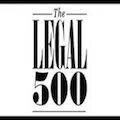Several innovations have been published on the intellectual property code, concerning trademark protection and defense and the filing of applications for recognition of new trademarks. The changes were necessary in order to adapt the Italian law to the European framework, to make registration and issuing procedures of member states as consistent as possible and to adapt them to those valid for the issuing of EU trademarks.
New rules applying to trademarks: presentation and classification
The new rules state that applications and translations related to the filing of national applications for:
- patents;
- registrations;
- patent rights for a new plant variety;
- complementary certificates for medical and phytosanitary products;
must be submitted in accordance with the forms that can be found:
- in patent filing offices;
- in the offices of Chambers of commerce, industry, handicrafts and agriculture;
- in the section of the website of the Directorate General for the fight against counterfeiting – Italian Patent and Trademark Office.
The forms must be signed by the applicant or his agent.
News concerning new procedures registration application and brand recognition
- abolition of the requirement of trademark graphic representation;
- extension of the ban on registering signs whose shape is imposed by the very nature of the product;
- prohibition of registration of signs relating to the protection of designations of origin and geographical indications;
- introduction of certification marks regulation;
- changes to the discipline of novelty;
- rules concerning invalidity, forfeiture, nullity, as well as disputes and appeals.
New trademarks classification as per the industrial property code reform
The classification of trademarks has been renewed in the intellectual property code, with the provision of the request for:
- indication of the type of trademark and its representation;
- analytical list of products or services for which trademark registration is required.
New types of trademarks.
The new regulation for company trademarks registration and certification qualifies as trademark all the signs represented in any suitable form made possible by the use of the technology available. Therefore, brands are no longer just linked to a sign or a graphic element, but also, for example, to a certain sound. The only requirement is that the graphic or phonic sign (or any other type identified as a trademark) must be able to differentiate a company’s products or services from those of its competitors, so as to allow the public and the authorities to identify exactly the object of protection.
Existing trademark categories. The new types of trademarks envisaged by the intellectual property code.
- word mark: consists exclusively of words, letters, numbers, other standard typographic characters or a combination thereof. The brand representation reproduces a sign of writing and layout, without graphics or colors;
- figurative trademark: uses characters, stylizations, graphic reproductions, colours. Within figurative marks there are also those made up exclusively of figurative elements or a combination of verbal and figurative elements;
- three-dimensional mark: consists of a three-dimensional shape such as containers, packaging, the product or its appearance. The three-dimensional trademark can also be the graphic reproduction of the shape, computer-processed images, a photographic reproduction;
- positioning brand: it can consist in the specific position of the brand on the product;
- repeating pattern mark: consists exclusively of a set of regularly repeating elements.
- color brand: it can consist of a single colour or of a systematic, constant and predetermined combination of colours;
- sound mark: consists exclusively of a sound or a combination of sounds. Its rendition is an audio file that plays sound;
- movement mark: it consists of a video file or a series of images reproduced in sequence, which reproduce the movement identifying the mark;
- multimedia mark: consists of an audiovisual file that contains the combination of image and sound representative of the brand;
- holographic marks consist of representational elements in an audio file with holographic characteristics.
- trademarks that do not fall into any of the identified typologies: in these cases, the representation of the trademark must comply with the identified and described standards.
Fill out the contact form to obtain international legal advice on trademarks
















